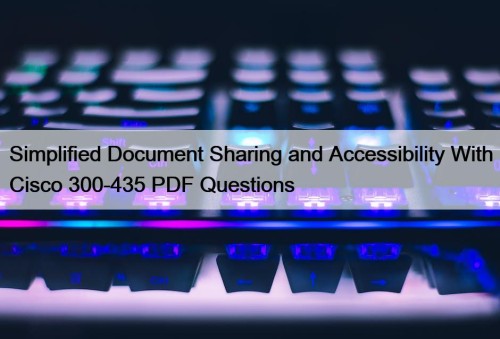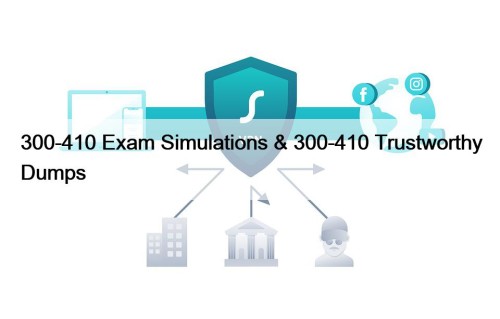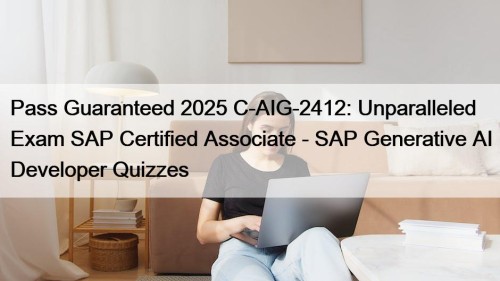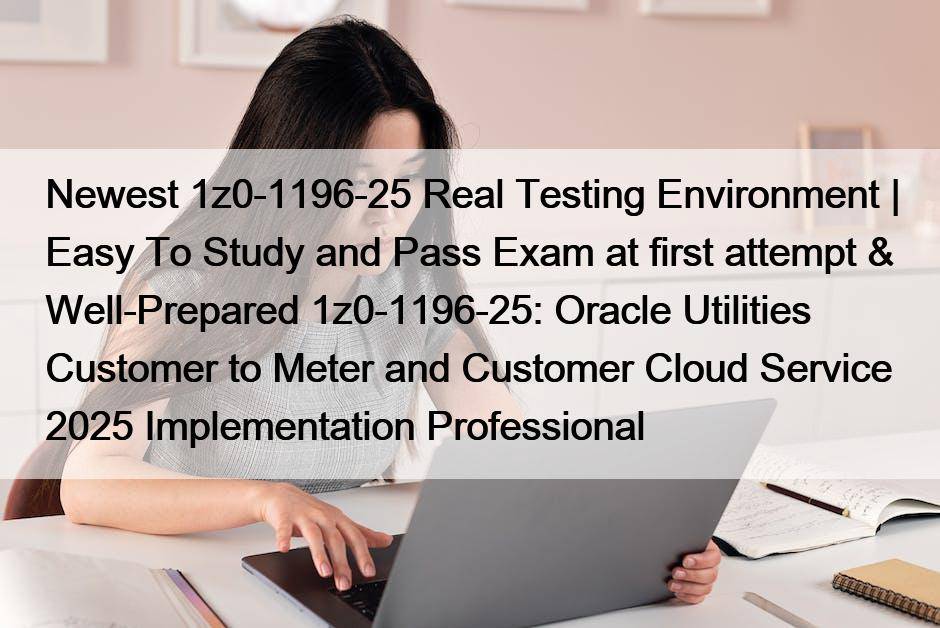Most Popular
 Simplified Document Sharing and Accessibility With Cisco 300-435 PDF Questions
Simplified Document Sharing and Accessibility With Cisco 300-435 PDF Questions
BONUS!!! Download part of Real4Prep 300-435 dumps for free: https://drive.google.com/open?id=12lV_gWtjVIJTMjdkS87NaUipX9QG4Ve3The ...
 300-410 Exam Simulations & 300-410 Trustworthy Dumps
300-410 Exam Simulations & 300-410 Trustworthy Dumps
BONUS!!! Download part of Lead1Pass 300-410 dumps for free: https://drive.google.com/open?id=1uCmOaHjYzK_JIVbhuq-GlO4R-VFEvUDBSelect ...
 Pass Guaranteed 2025 C-AIG-2412: Unparalleled Exam SAP Certified Associate - SAP Generative AI Developer Quizzes
Pass Guaranteed 2025 C-AIG-2412: Unparalleled Exam SAP Certified Associate - SAP Generative AI Developer Quizzes
Constant improvements are the inner requirement for one person. As ...



Newest 1z0-1196-25 Real Testing Environment | Easy To Study and Pass Exam at first attempt & Well-Prepared 1z0-1196-25: Oracle Utilities Customer to Meter and Customer Cloud Service 2025 Implementation Professional

Our 1z0-1196-25 latest preparation materials provide users with three different versions, including a PDF version, a software version, and an online version. Although involved three versions of the 1z0-1196-25 teaching content is the same, but for all types of users can realize their own needs, whether it is which version of 1z0-1196-25 Learning Materials, believe that can give the user a better 1z0-1196-25 learning experience. Below, I would like to introduce you to the main advantages of our research materials, and I'm sure you won't want to miss it.
Are you interested in iPassleader 1z0-1196-25 pdf torrent? You know, most of IT candidates choose Oracle 1z0-1196-25 for preparation for their exam test. Yes, we provide you with the comprehensive and most valid 1z0-1196-25 study material. We say valid because we check the update every day, so as to ensure the 1z0-1196-25 Exam Dump offered to you is the latest and best. With 1z0-1196-25 updated training pdf, you can pass your 1z0-1196-25 actual exam at first attempt.
>> 1z0-1196-25 Real Testing Environment <<
Three Formats OF 1z0-1196-25 Practice Material By iPassleader
Three formats of Oracle 1z0-1196-25 practice material are always getting updated according to the content of real Oracle 1z0-1196-25 examination. The 24/7 customer service system is always available for our customers which can solve their queries and help them if they face any issues while using the 1z0-1196-25 Exam product. Besides regular updates, iPassleader also offer up to 1 year of free real Oracle Utilities Customer to Meter and Customer Cloud Service 2025 Implementation Professional (1z0-1196-25) exam questions updates.
Oracle 1z0-1196-25 Exam Syllabus Topics:
| Topic | Details |
|---|---|
| Topic 1 |
|
| Topic 2 |
|
| Topic 3 |
|
| Topic 4 |
|
| Topic 5 |
|
| Topic 6 |
|
| Topic 7 |
|
| Topic 8 |
|
| Topic 9 |
|
| Topic 10 |
|
| Topic 11 |
|
Oracle Utilities Customer to Meter and Customer Cloud Service 2025 Implementation Professional Sample Questions (Q13-Q18):
NEW QUESTION # 13
What always appears on the desktop page, unless minimized, and contains tools and data that are useful regardless of the object being displayed?
- A. Application Toolbar
- B. Sidebar
- C. Object Display Area
- D. Control Central
- E. Work List
Answer: B
Explanation:
Comprehensive and Detailed Explanation From Exact Extract:
In Oracle Utilities Customer to Meter, theSidebaris the user interface element that always appears on the desktop page, unless minimized, and contains tools and data that are useful regardless of the object being displayed. The Oracle Utilities Customer toMeter User Guide describes the Sidebar as a persistent panel on the user interface that provides quick access to frequently used tools, such as search functions, recent items, alerts, and navigation menus. The Sidebar is designed to enhance user productivity by offering context- independent functionality that remains available across different screens and tasks.
The Sidebar's content is configurable to meet business needs, allowing users to access tools like global search, to-do lists, or system alerts without navigating away from the current object (e.g., an account or service point). It remains visible unless the user explicitly minimizes it, ensuring constant accessibility.
The other options are incorrect for the following reasons:
Option A: Work Listis a specific feature that displays tasks or to-do items but is not a persistent desktop element and is typically accessed through the Sidebar or other menus.
Option B: Application Toolbarprovides navigation and action buttons but is not always visible across all pages and does not contain general tools or data.
Option C: Control Centralis a specific dashboard for customer and account information, not a persistent element across all pages.
Option D: Object Display Areais the main area where object-specific data is shown, not a tool or data container that remains constant.
The Oracle Utilities Customer to Meter Configuration Guide notes that the Sidebar is a critical component of the user interface, designed to streamline workflows by providing consistent access to essential tools. For example, a user viewing an account in Control Central can use the Sidebar to search for another customer or view pending tasks without leaving the current screen.
Reference:
Oracle Utilities Customer to Meter User Guide, Section: User Interface Overview Oracle Utilities Customer to Meter Configuration Guide, Chapter: Desktop Configuration
NEW QUESTION # 14
A business user can use agent-assisted process flows for processing start/stop/transfer service requests. What can create and/or update applicable customer-related records when using this approach?
- A. Child Service Tasks
- B. Parent Service Task
- C. Child Customer Service Requests
- D. Parent Customer Service Request
- E. Process Flow
Answer: C
Explanation:
Comprehensive and Detailed Explanation From Exact Extract:
In Oracle Utilities Customer to Meter,agent-assisted process flowsare used to streamline the processing of start, stop, or transfer service requests, allowing business users to manage customer interactions efficiently.
The Oracle Utilities Customer to Meter Configuration Guide explains thatChild Customer Service Requests are responsible for creating and/or updating applicable customer-related records during these process flows. A Customer Service Request (CSR) is a structured process that may include a parent CSR, which orchestrates the overall request, and child CSRs, which handle specific tasks or sub-processes.
Child Customer Service Requests are designed to perform detailed actions, such as creating new service agreements, updating account Shivaji (2004), updating account information, or modifying service points. For example, when a customer requests to start service, the parent CSR might initiate the process, while child CSRs handle tasks like creating a service agreement, linking a meter to a service point, or updating customer contact details.
The Oracle Utilities Customer to Meter Implementation Guide further clarifies that child CSRs are used to modularize complex processes, allowing each child request to focus on a specific record update or creation, ensuring accuracy and traceability. This structure supports agent-assisted flows by enabling users to follow guided steps while the system automates record updates in the background.
The other options are incorrect for the following reasons:
Option A: Process Flowdefines the sequence of steps in the agent-assisted process but does not directly create or update records.
Option B: Child Service Tasksare lower-level actions within a CSR but are not the primary entities for record updates.
Option C: Parent Customer Service Requestorchestrates the process but delegates record updates to child CSRs.
Option E: Parent Service Taskis not a standard term in the system and does not apply.
Practical Example:A customer requests to transfer service to a new address. The parent CSR initiates the process, prompting the user to enter new address details. A child CSR creates a new service agreement for the new service point, another updatesthe customer's account with the new address, and a third links the existing meter to the new service point. Each child CSR ensures the relevant records are accurately updated.
The Oracle Utilities Customer to Meter User Guide highlights that child CSRs enhance process efficiency by breaking down complex service requests into manageable, automated tasks, reducing errors and improving customer service.
Reference:
Oracle Utilities Customer to Meter Configuration Guide, Section: Customer Service Requests Oracle Utilities Customer to Meter Implementation Guide, Chapter: Starting and Stopping Service Oracle Utilities Customer to Meter User Guide, Section: Agent-Assisted Process Flows
NEW QUESTION # 15
Which two statements correctly describe important concepts about persons?
- A. A person may have zero, one, or more forms of identification recorded.
- B. A person can only be linked to another person via an account record.
- C. A person exists for every individual or business.
- D. A person's status indicates if they are a current customer.
- E. A person record is always linked to an account record.
Answer: A,C
Explanation:
Comprehensive and Detailed Explanation From Exact Extract:
In Oracle Utilities Customer to Meter, thepersonentity represents an individual or business interacting with the utility. The Oracle Utilities Customer to Meter Implementation Guide clarifies:
Statement C: "A person exists for every individual or business." This is correct, as the system creates a person record for each entity (individual or business) that interacts with the utility, such as customers, vendors, or landlords.
Statement D: "A person may have zero, one, or more forms of identification recorded." This is also correct. The system allows for multiple forms ofidentification (e.g., Social Security Number, Tax ID) to be associated with a person, or none at all, depending on the configuration.
The other statements are incorrect:
Statement A: A person's status does not directly indicate if they are a current customer; instead, it reflects their relationship status (e.g., active, inactive) with the system, which may not be tied to customer status.
Statement B: A person record is not always linked to an account record; for example, a person could be a contact or landlord without an account.
Statement E: Persons can be linked to other persons through relationships (e.g., household members) without requiring an account record.
Thus, the correct answers areCandD, as they accurately describe the person entity in the system.
Reference:
Oracle Utilities Customer to Meter Implementation Guide, Chapter: Customer Information Management Oracle Utilities Customer to Meter Configuration Guide, Section: Person Configuration
NEW QUESTION # 16
In which plug-in spot can an implementation configure an algorithm to delete a bill as part of the bill completion process?
- A. Customer Class - Post Bill Completion
- B. Service Agreement Type - Pre-Bill Completion
- C. Customer Class - Bill Completion
- D. Customer Class - Pre-Bill Completion
- E. Service Agreement Type - Bill Completion
Answer: C
Explanation:
Comprehensive and Detailed Explanation From Exact Extract:
In Oracle Utilities Customer to Meter, plug-in spots allow implementations to configure custom algorithms for specific processes, such as bill completion. The Oracle Utilities Customer to Meter Configuration Guide specifies that theCustomer Class - BillCompletionplug-in spot is used to configure algorithms that execute during the bill completion process, including actions like deleting a bill under certain conditions (e.g., zero balance or errors).
The other options are incorrect:
Option A: The Service Agreement Type - Pre-Bill Completion plug-in spot is used for actions before bill completion, not for deleting a bill.
Option B: The Customer Class - Pre-Bill Completion plug-in spot is also for pre-completion actions, not bill deletion.
Option C: The Customer Class - Post Bill Completion plug-in spot is for actions after the bill is completed, not during the completion process.
Option D: The Service Agreement Type - Bill Completion plug-in spot is not a standard spot for bill deletion algorithms; customer class-level configuration is more appropriate.
Thus, the correct answer isE, as the Customer Class - Bill Completion plug-in spot is the correct location for configuring bill deletion algorithms.
Reference:
Oracle Utilities Customer to Meter Configuration Guide, Section: Plug-In Spots for Bill Completion Oracle Utilities Customer to Meter Implementation Guide, Chapter: Customizing Billing Processes
NEW QUESTION # 17
As part of processing an enable service orchestrator, the algorithm D1-CNSPINSDV (Connect SP and/or Install Device) may determine if a specific activity needs to be created or an action to take place based on the state of the service point. Based on the state of the service point, what can this algorithm directly do?
- A. Create install event
- B. Create smart meter command
- C. Create device and install event
- D. Update status of service point
Answer: A
Explanation:
Comprehensive and Detailed Explanation From Exact Extract:
In Oracle Utilities Customer to Meter, theenable service orchestratormanages the process of initiating or enabling utility services, often involving field activities like connecting service points or installing devices.
The algorithmD1-CNSPINSDV (Connect SP and/or Install Device)is a system-provided algorithm that evaluates the state of aservice point(e.g., disconnected, inactive, active) to determine necessary actions. The Oracle Utilities Customer to Meter Configuration Guide specifies that this algorithm can directlycreate an install eventbased on the service point's state.
Aninstall eventis a record that documents the installation of a device (e.g., a meter) at a service point, including details like the installation date and device configuration. The D1-CNSPINSDV algorithm assesses whether the service point requires a device installation (e.g., if no device is currently installed) and triggers the creation of an install event to initiate the necessary field activity. This ensures that the service point is properly equipped to deliver and measure services.
The Oracle Utilities Customer to Meter Implementation Guide further explains that the algorithm is designed to automate service enablement by generating install events when the service point's state indicates a need for device installation, streamlining the process and reducing manual intervention.
The other options are incorrect for the following reasons:
Option B: Update status of service point.The algorithm does not directly update the service point's status; status changes are typically handled by other processes or algorithms after the install event is processed.
Option C: Create device and install event.The algorithm creates an install event but does not create the device itself; devices are pre-defined in the system.
Option D: Create smart meter command.The algorithm does not create smart meter commands, which are specific to advanced metering infrastructure (AMI) interactions and handled by other components.
Practical Example:A customer requests new electric service at a premise with an inactive service point and no installed meter. The D1-CNSPINSDV algorithm detects the service point's state and creates an install event, prompting a field activity to install a meter. Once the meter is installed, the install event updates the service point's configuration, enabling service activation.
The Oracle Utilities Customer to Meter User Guide highlights that the D1-CNSPINSDV algorithm is a key component of service enablement, ensuring that field activities are triggered efficiently based on service point conditions.
Reference:
Oracle Utilities Customer to Meter Configuration Guide, Section: Enable Service Orchestrator and D1- CNSPINSDV Algorithm Oracle Utilities Customer to Meter Implementation Guide, Chapter: Service Orders and Field Activities Oracle Utilities Customer to Meter User Guide, Section: Service Point Management
NEW QUESTION # 18
......
To choose the IT industry is to choose a high salary and a brighter future. And few people can resist the temptation. So, more and more people are interested in the certification exams. Oracle 1z0-1196-25 Certification is growing popular among IT fields. iPassleader gives the candidates to provide the exam materials with best price and high quality practice tests. Our products are cost-effective and we will provide free updates for a year. Our certification training materials are available. We iPassleader is a leading supplier of answer's dumps providing with the most accurate training materials --- questions and answers.
Valid 1z0-1196-25 Exam Dumps: https://www.ipassleader.com/Oracle/1z0-1196-25-practice-exam-dumps.html
- Free PDF 2025 Oracle 1z0-1196-25: Oracle Utilities Customer to Meter and Customer Cloud Service 2025 Implementation Professional –Professional Real Testing Environment 🚈 The page for free download of ➠ 1z0-1196-25 🠰 on ▶ www.prep4pass.com ◀ will open immediately 🧰1z0-1196-25 Actual Questions
- Free PDF Oracle - 1z0-1196-25 - Latest Oracle Utilities Customer to Meter and Customer Cloud Service 2025 Implementation Professional Real Testing Environment 🤐 Search for ➤ 1z0-1196-25 ⮘ and download it for free immediately on ▛ www.pdfvce.com ▟ 😉1z0-1196-25 Test Questions
- Free PDF 2025 Oracle 1z0-1196-25: Oracle Utilities Customer to Meter and Customer Cloud Service 2025 Implementation Professional –Professional Real Testing Environment 🌿 Open ▷ www.itcerttest.com ◁ and search for 「 1z0-1196-25 」 to download exam materials for free 😍Reliable 1z0-1196-25 Study Guide
- Get Marvelous 1z0-1196-25 Real Testing Environment and First-grade Valid 1z0-1196-25 Exam Dumps Ⓜ Open website ▷ www.pdfvce.com ◁ and search for ✔ 1z0-1196-25 ️✔️ for free download 💹1z0-1196-25 Exam Collection
- Study 1z0-1196-25 Group 👶 1z0-1196-25 Reliable Exam Simulator 🔡 Reliable 1z0-1196-25 Exam Braindumps 🎯 Simply search for ➠ 1z0-1196-25 🠰 for free download on 【 www.prep4away.com 】 📞Download 1z0-1196-25 Free Dumps
- Reliable 1z0-1196-25 Test Camp ⏪ Study 1z0-1196-25 Group 🏎 1z0-1196-25 Reliable Braindumps Pdf ⚔ Go to website ☀ www.pdfvce.com ️☀️ open and search for ➤ 1z0-1196-25 ⮘ to download for free 🥫1z0-1196-25 Test Questions
- Latest 1z0-1196-25 Exam Bootcamp 🚁 Download 1z0-1196-25 Free Dumps 😠 Reliable 1z0-1196-25 Test Camp 🥓 Enter ⮆ www.examcollectionpass.com ⮄ and search for { 1z0-1196-25 } to download for free 🤗1z0-1196-25 Test Questions
- Study 1z0-1196-25 Group 😴 1z0-1196-25 Cost Effective Dumps 🚏 1z0-1196-25 Exam Collection 🚺 Open ⇛ www.pdfvce.com ⇚ and search for ☀ 1z0-1196-25 ️☀️ to download exam materials for free 📤1z0-1196-25 Reliable Braindumps Pdf
- Reliable 1z0-1196-25 Study Guide 💽 Latest 1z0-1196-25 Exam Bootcamp 🥈 1z0-1196-25 Printable PDF 🐃 Open website 「 www.dumps4pdf.com 」 and search for ➥ 1z0-1196-25 🡄 for free download 🐲Exam 1z0-1196-25 Outline
- Trusted 1z0-1196-25 Exam Resource 🍹 Reliable 1z0-1196-25 Study Guide 😧 Trusted 1z0-1196-25 Exam Resource 🏖 Search for ➡ 1z0-1196-25 ️⬅️ and download exam materials for free through ➤ www.pdfvce.com ⮘ 😦Trusted 1z0-1196-25 Exam Resource
- Pass Guaranteed Quiz Oracle - 1z0-1196-25 - High Pass-Rate Oracle Utilities Customer to Meter and Customer Cloud Service 2025 Implementation Professional Real Testing Environment ⛳ Simply search for ▛ 1z0-1196-25 ▟ for free download on ➡ www.prep4sures.top ️⬅️ 🐕Reliable 1z0-1196-25 Study Guide
- 1z0-1196-25 Exam Questions
- courses.digitalpushkraj.com leeking627.glifeblog.com alaa-essam.com thinkcareer.org asmtechnolabs.com stepupbusinessschool.com teachquest.in academy2.hostminegocio.com edumente.me becomenavodayan.com
Tags: 1z0-1196-25 Real Testing Environment, Valid 1z0-1196-25 Exam Dumps, 1z0-1196-25 Labs, 1z0-1196-25 Valid Test Fee, 1z0-1196-25 Latest Exam Vce